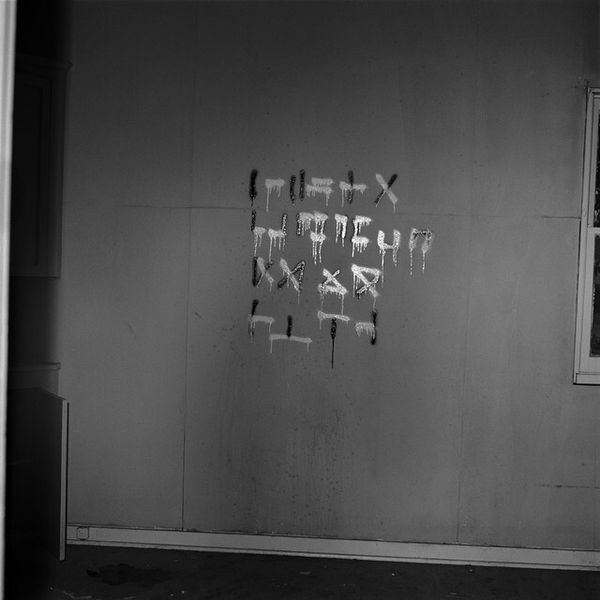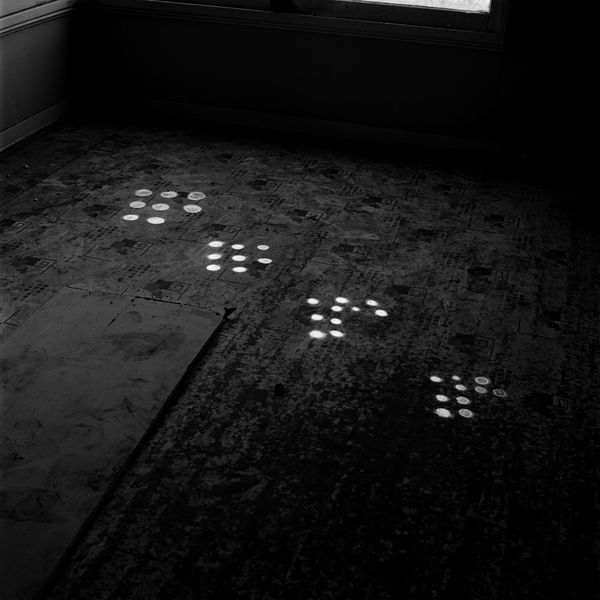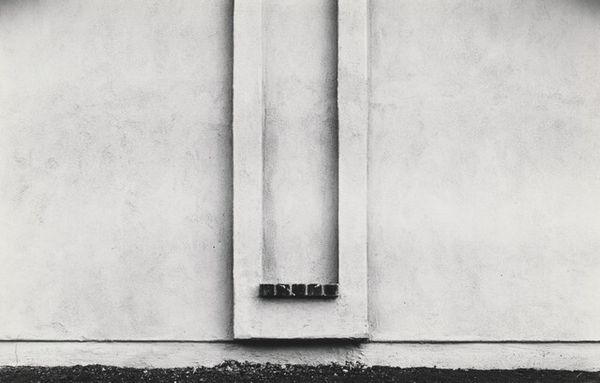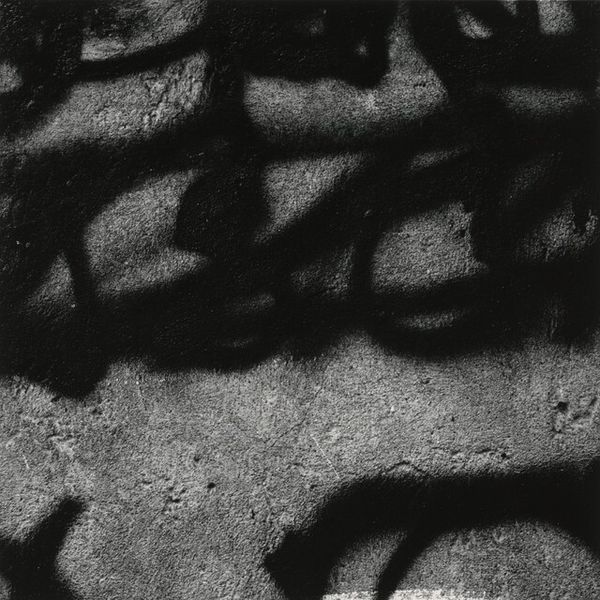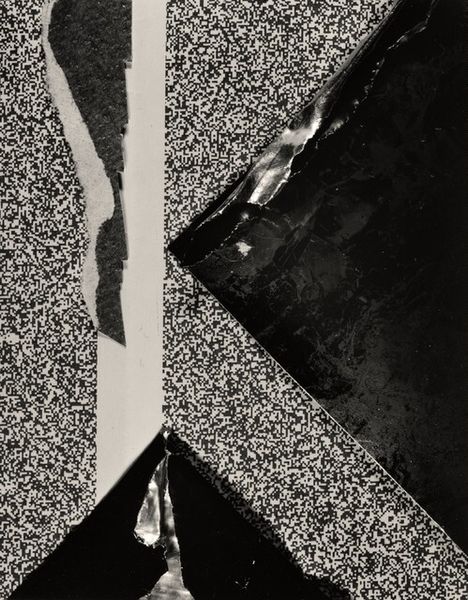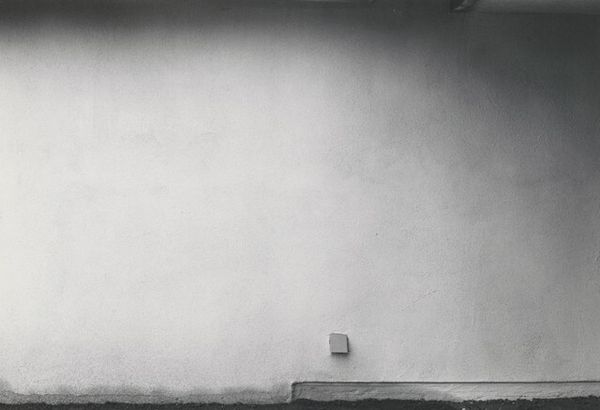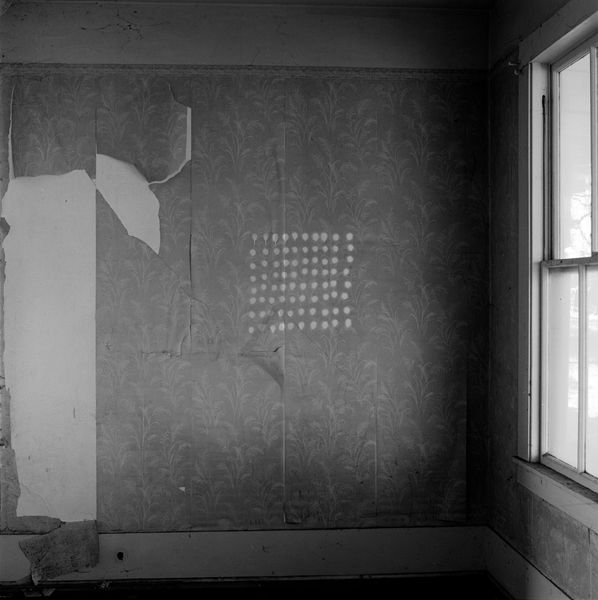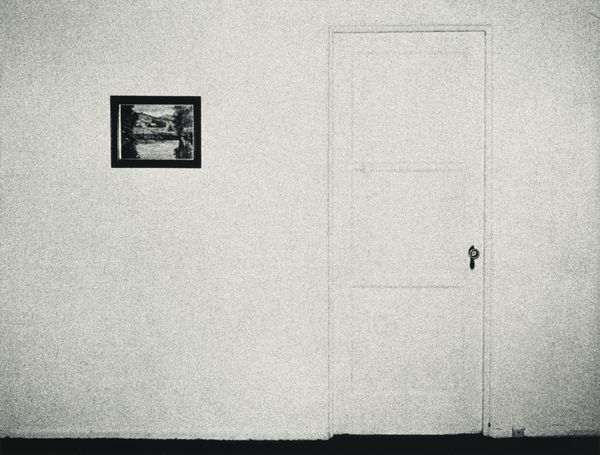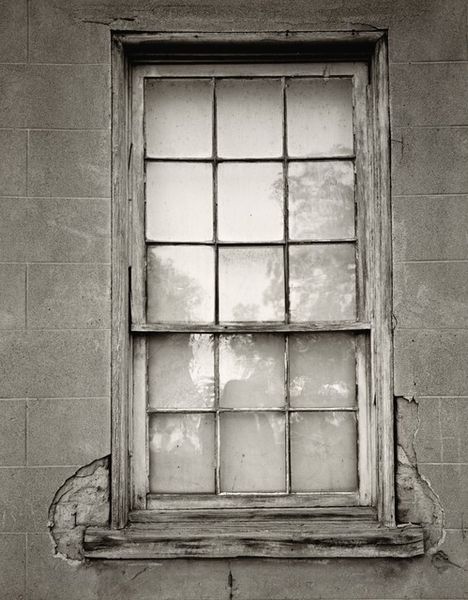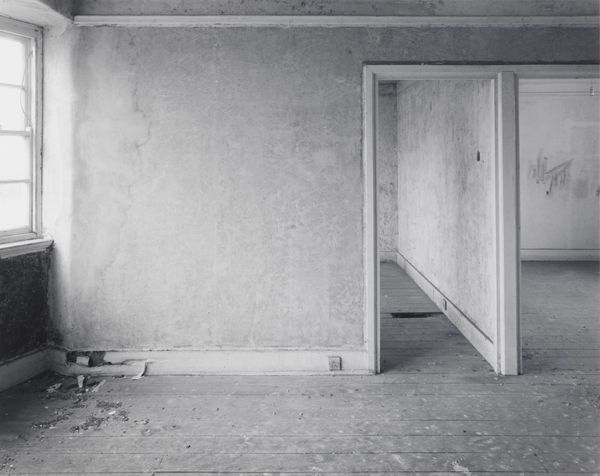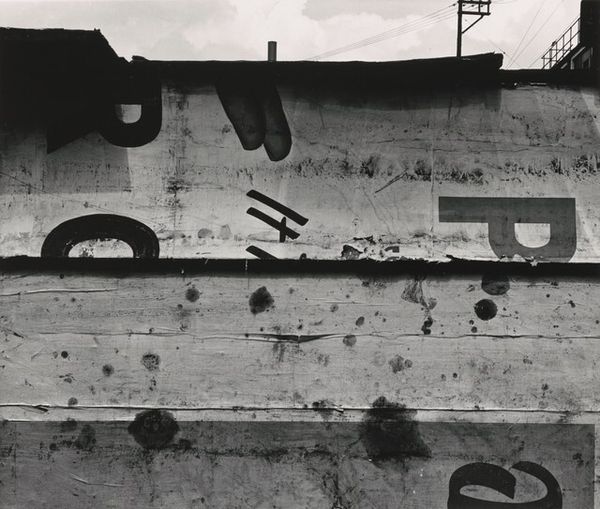
photography, gelatin-silver-print
#
dark place
#
dark object
#
conceptual-art
#
black and white photography
#
landscape
#
street-photography
#
photography
#
derelict
#
dark shape
#
gelatin-silver-print
#
monochrome photography
#
monochrome
#
ruin
#
worn down
#
monochrome
#
dark
Dimensions: image: 34.93 × 34.93 cm (13 3/4 × 13 3/4 in.) mat: 62.23 × 59.69 cm (24 1/2 × 23 1/2 in.) framed: 64.14 × 61.6 × 3.81 cm (25 1/4 × 24 1/4 × 1 1/2 in.)
Copyright: National Gallery of Art: CC0 1.0
Editor: We're looking at "75V02" by John Divola, a gelatin-silver print from possibly between 1973 and 1993. It’s a stark black and white image of what appears to be an interior space, almost claustrophobic, with a single window revealing a glimpse of the outside. What do you see in this piece? Curator: This image, to me, is a powerful statement on the human condition, the push and pull between confinement and freedom, decay and hope. Divola's work often explores marginalized spaces. Considering the period this was created, doesn't it make you think about societal neglect and the spaces we choose to ignore, particularly during deindustrialization? How might that resonate with the spray painted mark on the wall? Editor: I hadn’t considered that context. The graffiti now feels less random and more like a sign of someone’s presence, a desperate mark left in a forgotten space. Is the outside supposed to function like an ideal, freedom as being preferable to this darkness? Curator: Exactly! The window frames this outside world, a promise perhaps, but also a stark reminder of what’s absent from the interior. We have to consider the stark contrast in tone; the brightness of outside with the interior's darkness to symbolize freedom versus being contained. Can you connect it to how people from that time might've struggled with socio-economic factors in relation to freedom? Editor: I guess the outside landscape wouldn't mean freedom for all, depending on one's background. Thinking about the power structures at play is kind of…sobering. This dark interior becomes a symbol of struggle, not just abandonment. Curator: And that’s where the power lies, right? It invites us to confront uncomfortable realities. It asks us, who has access to beauty, to freedom, and who is left in the shadows? These conversations matter as much now as when the work was made. Editor: Definitely. Seeing it through that lens makes it a lot more thought-provoking, something that gets past face-value observations. Curator: Yes, the piece is transformed, no longer an innocent picture; the conversation has provided me a view beyond the image I previously could not connect with as poignantly.
Comments
No comments
Be the first to comment and join the conversation on the ultimate creative platform.
